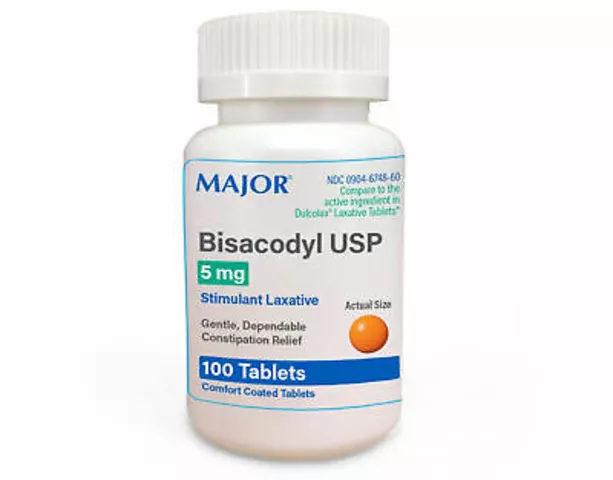Understanding Amoxil and Its Uses
Lorem ipsum dolor sit amet, consectetur adipiscing elit. In lacus diam, suscipit a consequat in, vehicula a arcu. Amoxil, or as the science folks like to call it, Amoxicillin, is a superhero in the antibiotic world without the flashy cape. It's one of the most popular antibiotics prescribed to deal with bacterial infections. Now, I'm not a doctor—I can barely stick a plaster on the right way—but I do know that when it comes to bacterial infections, this is the go-to guy.
So, why is Amoxil so popular, you might ask? Gosh, I'm glad you did, because I love sharing interesting tidbits. It hits a wide range of bacteria with a one-two punch, but without the physical violence because, well, it's medicine. I learned that it's a penicillin antibiotic, and it fights bacteria in your body like a tiny, microscopic knight in shining armor. We're talking respiratory tract infections, urinary tract infections, skin infections, ear infections—you name it, Amoxil's on the case.
Now, we should remember that antibiotics like Amoxil aren't effective against viruses, like that pesky flu. If you're coughing and sneezing and generally feeling like something the cat dragged in, Amoxil isn't going to wave a magic wand and make you better. It's not Cinderella's fairy godmother; it's more like the sword-wielding hero that defends the kingdom from dragons—or in this case, bacteria.
The Not-So-Fun Side of Amoxil
While Amoxil sounds like a pharmaceutical superstar—and don't get me wrong, it can be—we need to acknowledge that every rose has its thorn. Side effects, the unwanted guests at the party that nobody invited. But they are important to discuss because we all want to know what we're getting into, right?
Some common side effects might include things like nausea, vomiting (yuck), or diarrhea. Imagine having your toilet become your best friend through thick and thin. On the serious side, though, there are more severe reactions like allergic reactions, which can be pretty scary and range from rash to difficulty breathing. Please, if you see signs of an allergic reaction, don't try to be a superhero—seek medical help. That's a battle for real medical professionals, not for us mere mortals.
Now, for the interactions—and no, not the social kind, these are less fun. Amoxil can play nice with many medications but can also clash with others like methotrexate or warfarin. If we compare this to high school, Amoxil is generally friendly but can have fallouts with certain crowds. Always, always check with your doctor about possible drug interactions, because playing mix-and-match with medications without expert advice is a no-go zone.
How Much Amoxil is Too Much?
When it comes to dosages, we're not looking for a Goldilocks 'just right' porridge situation. Oh no, this is precision work. Common dosages range, but doctors typically prescribe 250 to 500 milligrams every 8 to 12 hours. Now, unless you have a medical degree, don't try to guess your way through; that's what doctors are for. You wouldn't have me, Kenton, fixing your plumbing based on a hunch—I'd probably flood the house!
The thing to remember is that overdosing on Amoxil is like inviting chaos to dinner—it's not a great idea. Stick to your doctor's prescription, and you'll be the Goldilocks of Amoxil usage. Each body is unique, and dosages are tailored like a bespoke suit—you want it to fit you perfectly. And finish your course of antibiotics, even if you feel better after the first few days. Don't leave the battle half-fought; make sure those bacterial dragons are well and truly vanquished.
Of course, there are always more specific recommendations based on the type of infection you're dealing with or your own personal health history. It's like choosing the right outfit for an occasion—you need to match it to the event. Infection outfit choices, fascinating, eh?
Before You Pop That Amoxil
Okay, let's not get too excited and start gulping down those Amoxil capsules as if they were candies. Before you start, there's a bit of a checklist we need to go over. First off, let your doctor know if you're allergic to penicillin. Mentioning it after the fact is like saying you don't like heights while you're halfway up a climbing wall.
Also, discuss your health history. If you've got other conditions, like kidney issues, or you're pregnant or breastfeeding, you've got to loop your doctor in. It's a bit like letting your friends know your dietary restrictions before a dinner party—it's pretty important.
And of course, let your healthcare provider know about other medications you're taking. Don't just say 'I'm taking some pills'; be specific. Doctors are amazing, but they aren't mind readers. Telling them exactly what you're on helps them keep you safe, like a detailed roadmap for your health journey.
Finding Amoxil
You're wondering where to find Amoxil, right? It's like searching for treasure, except the X on the map is your pharmacy. Nowadays, with the marvel of the internet, you're just a few clicks away from finding Amoxil for sale. It's convenient, but remember—just because you can buy it doesn't mean you should skip the doctor chat. That would be like trying to build Ikea furniture without instructions or, worse, without those little Allen keys.
And if you're not the techie type, old-fashioned brick-and-mortar pharmacies have you covered. You walk in, hand over your prescription, maybe stroll around looking at the plethora of health products you never knew existed, and voilà—an antibiotic appears!
Cost-wise, Amoxil generally doesn't require you to sell a kidney (which would be counterproductive, given you might need the antibiotic for a kidney infection). It's pretty affordable, but prices can vary like the stock market—so do a bit of homework to find the best deal.
Storing Your Amoxil
There's an art to storing medications, and it doesn't involve a humid bathroom cabinet or a hot car glovebox. Heat, moisture, and light are the Three Musketeers of Medicine Destruction. Instead, think cool, dry places, like a supervillain's lair—but with less evil and more healthcare.
Keep the medication in its original packaging—I know, I know, repackaging might look cuter, but resist the urge. And, keep that lid tightly closed. If you treat it like your secret stash of the best cookies, you're on the right track. This helps ensure the medication stays effective and doesn't become a playground for bacteria (ironic, isn't it?).
Lastly, once you've defeated your bacterial foe and you have leftover meds, don't hold onto them like a memento. Leftover antibiotics aren't souvenirs; take them to a pharmacy for proper disposal. We want to avoid creating super bacteria, capable of resisting antibiotics because they've been exposed to them carelessly. Let's not give the bacteria a free training ground!
Final Notes on Taking Amoxil
Taking Amoxil is a responsibility, almost like pet ownership. You wouldn't give your dog Bruno a bath with dish soap or feed your cat Bella some spicy tacos. Similarly, you shouldn't take Amoxil without proper guidance from your healthcare provider.
Remember, antibiotics are not cure-alls. They are specifically designed to combat bacterial infections—not hangovers, broken hearts, or the existential dread of Mondays. Using them judiciously helps prevent the rise of antibiotic-resistant bacteria, which are as troublesome as a mosquito in your bedroom at 3 AM.
So there you have it, your extensive guide to Amoxil. Like any healthcare topic, it's layered and requires attention to detail. Use this information responsibly, consult your doctor, and here's to your health—because, let's face it, being healthy is a whole lot better than the alternative!








This was so helpful! I've been scared to take antibiotics before, but now I feel way more confident. Thanks for breaking it down like this 😊
Just a quick heads-up: if you're on birth control, amoxicillin can make it less effective. Always check with your pharmacist - better safe than sorry! 💊
I took this once for a sinus infection and ended up in the bathroom for three days. Not worth it. Just drink soup and cry like a normal person.
You wrote 'Amoxil' correctly throughout, but you misspelled 'amoxicillin' twice. Also, 'penicillin' is not a 'superhero' - it's a beta-lactam antibiotic. Precision matters.
The fact that people are buying antibiotics online like they're buying sneakers is why America is dying. You don't just 'click and conquer' bacteria - you need a prescription, a brain, and basic responsibility. This isn't TikTok.
Ah yes, the classic 'Amoxicillin is a knight in shining armor' metaphor. Because nothing says medical accuracy like anthropomorphizing antibiotics like a children's book. Next up: 'Vancomycin the Dragon Slayer'.
I've been a nurse for 18 years and I can't tell you how many patients come in saying 'I took some leftover amoxicillin from last year' - and then wonder why they're still sick. Antibiotic resistance isn't sci-fi. It's your neighbor's bad decisions. Finish the course. Don't hoard. Don't guess.
In the UK, we can't even buy this over the counter - and rightly so. The fact that you can order it online without a prescription is a public health nightmare. We need better education, not easier access.
I'm from a rural area where pharmacies are 40 miles away. Online options save lives. It's not about skipping the doctor - it's about access. Compassion over judgment.
In India, we have this problem too - people buy antibiotics without prescriptions because they think it's 'faster'. But then they get resistant infections and end up in ICU. This guide is gold. Please share it everywhere.
Of course the post links to some sketchy website. Of course it does. 'ww1.strutyours.su'? That's not a domain - that's a phishing trap with a side of antibiotics. You're literally helping scammers.
I JUST TOOK AMOXIL FOR A TOOTHACHE AND NOW I'M SWOLLEN AND CAN'T TALK AND I'M SURE IT'S THE ANTIBIOTIC BUT I'M NOT GOING TO THE ER BECAUSE I'M AFRAID OF BILLS AND NOW I'M CRYING AND THIS IS ALL YOUR FAULT
I appreciate the tone. It's easy to get scared by medical stuff, but this felt like a friend explaining it over coffee. No jargon, no panic - just clear info. Thank you.
The real tragedy isn't the misuse of antibiotics - it's the systemic failure that forces people to self-medicate. When healthcare is a luxury, 'buying online' isn't a choice - it's survival. We need to fix the system, not shame the people caught in it.
The metaphorical framing of antibiotics as 'knights' and 'dragons' is not merely inaccurate - it is epistemologically dangerous. Medical literacy requires precision, not poetic license. This post, while well-intentioned, contributes to the commodification of clinical knowledge.
i took amoxil last year for a ear infection and it worked great! but i forgot to finish it and now i think i got sick again... maybe i shud have finished it? idk
omg this is literally the best thing i’ve read all week. i was gonna just google it and take whatever i found but now i feel like i actually get it. thank you thank you thank you 💕
Also, just a tip - if you're on a plant-based diet, some capsules have gelatin. Look for veggie caps. Small thing, but it matters 🌱